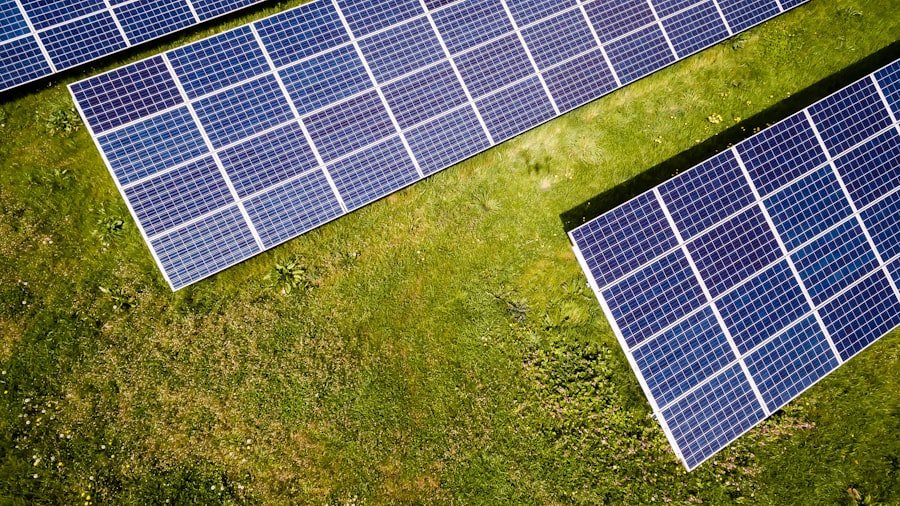Carbon pricing is a key mechanism for stimulating investment in renewable energy. By assigning a monetary value to carbon emissions, governments and corporations create economic incentives for the development and implementation of renewable energy technologies. This approach is critical in addressing climate change, as the shift towards renewable energy sources is fundamental to reducing greenhouse gas emissions.
Carbon pricing sends a clear market signal that carbon emissions carry a cost, encouraging businesses to seek cleaner, more sustainable alternatives. Consequently, this drives investment in renewable energy projects as companies aim to capitalize on the increasing demand for low-carbon energy sources. Additionally, carbon pricing helps create a more equitable market environment for renewable energy by incorporating the external costs associated with fossil fuel usage.
This means that the environmental and societal impacts of burning fossil fuels are reflected in their price, enhancing the competitiveness of renewable energy in the market. As a result, investors are more inclined to allocate funds to renewable energy projects, recognizing the potential for returns without contributing to climate change. In this manner, carbon pricing fosters a more favorable investment climate for renewable energy, which is essential for expanding clean energy infrastructure and reducing dependence on fossil fuels.
Key Takeaways
- Carbon pricing is crucial in driving investment in renewable energy by creating financial incentives for businesses to reduce their carbon emissions.
- The impact of carbon pricing on the economics of renewable energy projects is significant, as it makes renewable energy more competitive with fossil fuels by internalizing the cost of carbon emissions.
- Carbon pricing plays a key role in shifting investment away from fossil fuels and towards renewable energy, as it makes fossil fuel investments less attractive due to the associated carbon costs.
- Carbon pricing has a positive effect on renewable energy technology innovation and development, as it encourages businesses to invest in research and development of cleaner energy technologies.
- There is a strong relationship between carbon pricing and investor confidence in renewable energy, as it provides a stable and predictable market for renewable energy investments.
The Impact of Carbon Pricing on the Economics of Renewable Energy Projects
Creating a Financial Incentive
This creates a financial incentive for businesses and investors to shift their resources towards renewable energy projects, as they become more competitive in comparison to traditional fossil fuel-based energy sources.
Driving Down Costs and Increasing Revenue
As a result, carbon pricing can drive down the cost of renewable energy technologies through economies of scale and technological innovation, making them even more economically viable in the long run. Moreover, carbon pricing can also lead to increased revenue streams for renewable energy projects. For example, in a cap-and-trade system, companies that exceed their emissions allowances must purchase additional permits, creating a market for carbon credits.
Improving Financial Viability
Renewable energy projects that generate low or zero emissions can sell these credits, providing an additional source of income that can improve the financial viability of the project. This additional revenue stream can make renewable energy projects more attractive to investors, further driving investment in clean energy infrastructure. Overall, carbon pricing has a positive impact on the economics of renewable energy projects, making them more financially viable and attractive to investors.
The Role of Carbon Pricing in Shifting Investment Away from Fossil Fuels

Carbon pricing plays a crucial role in shifting investment away from fossil fuels and towards renewable energy. By putting a price on carbon emissions, governments can effectively increase the cost of using fossil fuels, making them less economically attractive compared to cleaner alternatives. This creates a financial incentive for businesses and investors to reallocate their resources towards renewable energy projects, as they become more competitive in comparison to traditional fossil fuel-based energy sources.
As a result, carbon pricing can drive down the demand for fossil fuels and reduce their market share, leading to a shift in investment towards cleaner, more sustainable energy sources. Furthermore, carbon pricing can also lead to divestment from fossil fuel assets as investors seek out more environmentally friendly opportunities. As the cost of emitting carbon increases, the financial risks associated with investing in fossil fuel assets also rise.
This can lead to a decrease in the value of these assets and make them less attractive to investors. In contrast, renewable energy projects become more economically viable and attractive as the cost of carbon emissions rises, leading to increased investment in clean energy infrastructure. Overall, carbon pricing plays a critical role in shifting investment away from fossil fuels and towards renewable energy, which is essential for addressing climate change and transitioning to a low-carbon economy.
The Effect of Carbon Pricing on Renewable Energy Technology Innovation and Development
Carbon pricing has a significant effect on renewable energy technology innovation and development. By putting a price on carbon emissions, governments create a financial incentive for businesses and researchers to develop and adopt cleaner, more sustainable energy technologies. This can lead to increased investment in research and development for renewable energy, as companies seek out innovative solutions to reduce their carbon footprint and comply with emissions regulations.
As a result, carbon pricing can drive technological innovation in the renewable energy sector, leading to the development of more efficient and cost-effective clean energy technologies. Moreover, carbon pricing can also drive down the cost of renewable energy technologies through economies of scale and technological advancement. As the demand for clean energy increases due to higher carbon prices, manufacturers can benefit from economies of scale and reduce production costs.
Additionally, technological advancements driven by the need to reduce carbon emissions can lead to more efficient and affordable renewable energy technologies. This makes renewable energy more economically viable and attractive to investors, driving further investment in clean energy infrastructure. Overall, carbon pricing has a positive effect on renewable energy technology innovation and development, leading to the advancement of cleaner and more sustainable energy solutions.
The Relationship Between Carbon Pricing and Investor Confidence in Renewable Energy
There is a strong relationship between carbon pricing and investor confidence in renewable energy. By putting a price on carbon emissions, governments create a clear signal to the market that there is a cost associated with emitting carbon, which encourages businesses to seek out cleaner, more sustainable alternatives. This creates a more favorable investment environment for renewable energy projects, as investors are more confident that there is growing demand for low-carbon energy sources.
As a result, carbon pricing can increase investor confidence in renewable energy by providing financial incentives for the development and adoption of clean energy technologies. Furthermore, carbon pricing can also lead to increased revenue streams for renewable energy projects through the sale of carbon credits. In a cap-and-trade system, companies that exceed their emissions allowances must purchase additional permits, creating a market for carbon credits.
Renewable energy projects that generate low or zero emissions can sell these credits, providing an additional source of income that can improve the financial viability of the project. This additional revenue stream can make renewable energy projects more attractive to investors, further increasing investor confidence in clean energy infrastructure. Overall, there is a strong relationship between carbon pricing and investor confidence in renewable energy, as it creates a more favorable investment environment for clean energy projects.
The Potential for Carbon Pricing to Drive Increased Investment in Renewable Energy Infrastructure

Creating a Favorable Investment Environment
This creates a more favorable investment environment for renewable energy projects, as they become more economically competitive compared to traditional fossil fuel-based energy sources.
Driving Investment in Clean Energy Infrastructure
As a result, carbon pricing can drive increased investment in clean energy infrastructure as businesses seek out opportunities to capitalize on the growing demand for low-carbon energy solutions. Moreover, carbon pricing can also lead to increased revenue streams for renewable energy projects through the sale of carbon credits.
Generating Additional Revenue Streams
In a cap-and-trade system, companies that exceed their emissions allowances must purchase additional permits, creating a market for carbon credits. Renewable energy projects that generate low or zero emissions can sell these credits, providing an additional source of income that can improve the financial viability of the project. This additional revenue stream can make renewable energy projects more attractive to investors, further driving increased investment in clean energy infrastructure.
The Future Outlook for Renewable Energy Investment in the Context of Carbon Pricing
The future outlook for renewable energy investment in the context of carbon pricing is promising. As governments around the world continue to implement policies aimed at reducing greenhouse gas emissions, there is growing momentum for carbon pricing as a key tool in driving investment in clean energy infrastructure. This creates a more favorable investment environment for renewable energy projects, as they become more economically competitive compared to traditional fossil fuel-based energy sources.
As a result, there is increasing potential for increased investment in clean energy infrastructure as businesses seek out opportunities to capitalize on the growing demand for low-carbon energy solutions. Furthermore, technological advancements driven by the need to reduce carbon emissions can lead to more efficient and affordable renewable energy technologies. This makes renewable energy more economically viable and attractive to investors, driving further investment in clean energy infrastructure.
Additionally, as the cost of emitting carbon increases, the financial risks associated with investing in fossil fuel assets also rise. This can lead to divestment from fossil fuel assets as investors seek out more environmentally friendly opportunities. In contrast, renewable energy projects become more economically viable and attractive as the cost of carbon emissions rises, leading to increased investment in clean energy infrastructure.
Overall, the future outlook for renewable energy investment in the context of carbon pricing is promising as governments continue to implement policies aimed at reducing greenhouse gas emissions and driving investment in clean energy infrastructure.
If you’re interested in learning more about the economic impact of carbon pricing, check out this article on The Econosphere. They provide in-depth analysis and insights into the effects of carbon pricing on investment in renewable energy and its implications for the economy. Their expertise in economic and environmental issues makes them a valuable resource for understanding the intersection of policy and investment in the renewable energy sector. For more information, visit their website at https://theeconosphere.com/. If you have any questions or want to get in touch with their team, you can reach out to them through their contact page at https://theeconosphere.com/contact-us/.
FAQs
What is carbon pricing?
Carbon pricing is a policy tool used to reduce greenhouse gas emissions by putting a price on carbon emissions. This can be done through a carbon tax or a cap-and-trade system.
How does carbon pricing influence investment in renewable energy?
Carbon pricing can make renewable energy sources more competitive by increasing the cost of fossil fuel-based energy. This can lead to greater investment in renewable energy technologies.
What are the potential benefits of carbon pricing on investment in renewable energy?
Carbon pricing can incentivize businesses to invest in renewable energy technologies, leading to reduced greenhouse gas emissions and a transition to a more sustainable energy system.
Are there any potential drawbacks to carbon pricing on investment in renewable energy?
Some critics argue that carbon pricing may increase energy costs for consumers and businesses, and that the effectiveness of carbon pricing in driving investment in renewable energy depends on the specific design and implementation of the policy.
How do businesses respond to carbon pricing in terms of investment in renewable energy?
Businesses may respond to carbon pricing by investing in renewable energy technologies to reduce their carbon footprint and comply with regulations, or by lobbying for exemptions or subsidies.








